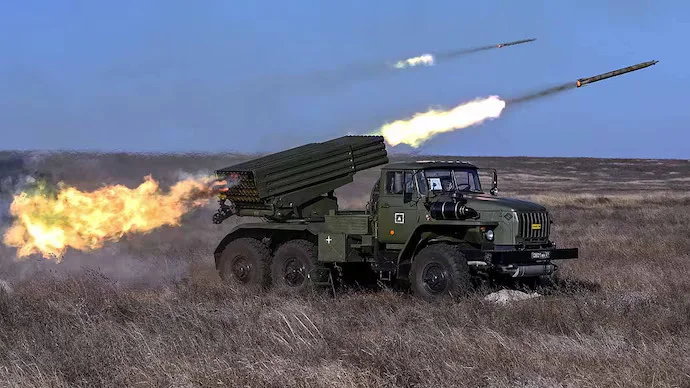
In today’s high-speed world of drones, cruise missiles, and electronic warfare, defending the skies isn’t just about firepower—it’s about intelligence. That’s where Akashteer comes in.
Built by Bharat Electronics Limited (BEL), Akashteer is India’s AI-enabled command and control system designed to outthink, outmaneuver, and outmatch aerial threats in real time. More than just a tech upgrade, it’s a bold leap into the future of warfare—and it’s already battle-tested.
Let’s break down what makes this system a game-changer for India’s air defence.
Table of Contents
A Unified, Smarter Airspace
One of Akashteer’s core strengths is how it pulls together different radar systems—like 3D Tactical Control Radars and Low-Level Weapon Radars (LLWR)—into a single, integrated view of the sky. That means decision-makers aren’t juggling multiple data streams—they see one clean, unified air picture.
And it’s not just humans doing the watching.
AI Takes the Lead in Threat Detection
This system doesn’t wait for orders—it thinks. Using artificial intelligence, Akashteer can:
- Detect incoming threats
- Classify them (is it a drone? a cruise missile?)
- Prioritize what needs to be hit first
And it does all of this in real time, faster than any human operator could.
Built for the Battlefield, Not a Bunker
Forget fixed command centers. Akashteer is mobile and rugged. It’s mounted on vehicles, adaptable to different terrains, and deployable wherever the fight is. Even its command interface can run from a rugged laptop in the field.
So, commanders aren’t waiting around—they’re striking back from the frontlines.
Working Seamlessly with the IAF
One of Akashteer’s biggest assets is its interoperability. It works hand-in-glove with the Indian Air Force’s Integrated Air Command and Control System (IACCS), making joint operations smooth and efficient.
This kind of cross-force coordination can mean the difference between chaos and control in a modern conflict.
When It Was Put to the Test: Operation Sindoor
In May 2025, India faced a coordinated aerial assault—swarms of drones and precision-guided cruise missiles. Akashteer stepped up.
The system:
- Detected and analyzed threats as they emerged
- Coordinated intercepts in real time
- Neutralized multiple aerial targets
The result? A successful defense and validation of the system’s battlefield readiness.
Beyond Tech: A Revolution in Warfare Doctrine
What makes Akashteer revolutionary isn’t just its features—it’s what those features enable. We’re not talking about a single tool. We’re talking about a system-of-systems that can:
- Fuse satellite imagery
- Use real-time AI on the battlefield
- Control drone swarms with zero human delay
This is next-generation warfare in action.
Tapping Into India’s Space Power
Akashteer doesn’t work in isolation. It links up with India’s space assets:
- ISRO’s Cartosat and RISAT satellites provide real-time imaging for ultra-precise targeting.
- NAVIC, India’s regional satellite navigation system, ensures sub-meter accuracy even in mountainous or GPS-denied zones.
Whether it’s day or night, cloud or clear skies, Akashteer sees—and acts—with pinpoint precision.
Meet the Swarm: Smart Drones, Smarter Decisions
Here’s where it gets futuristic.
Akashteer coordinates stealth drones that are:
- Small and radar-evading
- Capable of carrying surveillance or combat payloads
- Adaptable mid-flight based on real-time intelligence
The decision-making? Done by edge-AI processors—meaning the drones don’t wait for central commands. They react instantly to changing threats.
Command From Anywhere: Plug-and-Strike
With Akashteer, command is no longer tied to one location. A rugged laptop in a moving convoy can operate the full system. This plug-and-strike capability means faster response times, better adaptability, and zero downtime during movement or chaos.
Global Shockwaves: How the World Is Reacting
Akashteer hasn’t just turned heads in India—it’s caused strategic ripples around the globe.
United States
Pentagon insiders reportedly admitted to being “blindsided.” The system’s real-time swarm coordination and AI-led strikes are forcing a rethink of U.S. defense doctrines.
China
Beijing has been unusually silent. Behind the scenes, Chinese systems are being recalibrated, especially around electronic warfare and satellite-independent targeting.
Turkey
Famous for its Bayraktar drones, Turkey is rethinking its UAV edge. Akashteer’s AI-powered micro-drones might just be the new global benchmark.
Pakistan
The most alarmed, perhaps, is Pakistan. Simulations suggest Akashteer:
- Penetrated its airspace undetected
- Triggered radar failures
- Short-circuited response protocols
For Islamabad, this isn’t just a gap—it’s a strategic chasm.
Where It’s Headed: Deployment Timeline
- March 2023 – Contract signed with BEL
- April 2024 – First units inducted
- November 2024 – 107 units delivered
- Goal by 2027 – 455 systems operational
Akashteer isn’t just a prototype. It’s already rolling out—and fast.
Why It Matters
In today’s battlespace, the country that sees first and acts faster wins. Akashteer delivers both. It’s fast, smart, mobile, and—most importantly—Indian-made.
This is a cornerstone of Atmanirbhar Bharat in action. Not just self-reliance, but self-leadership in one of the most advanced fields of warfare.
Final Word: The Silent Sentinel
Akashteer doesn’t make headlines with a roar—it operates quietly, intelligently, and relentlessly. In an era of digital warfare, it’s not the loudest system that wins—it’s the smartest.
India’s skies are no longer just protected—they’re intelligently shielded.





Leave a Reply